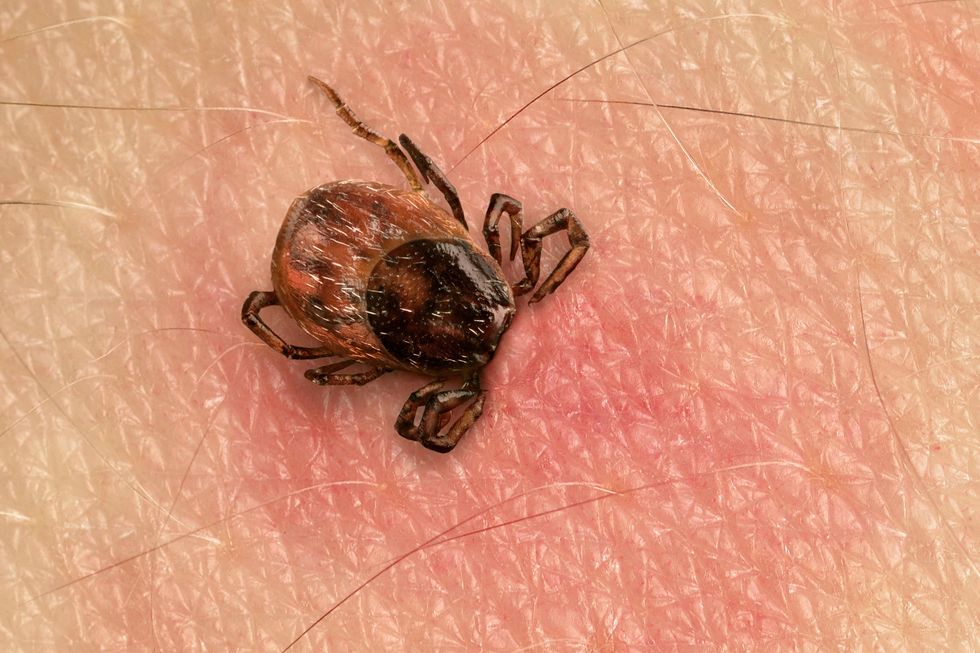Tick Bites: Symptoms, Causes, Treatment
What are the symptoms of a tick bite?
The symptoms of a tick bite can vary depending on the type of tick, the person’s sensitivity to tick bites, and whether the tick transmitted any infections. Common symptoms of a tick bite include:
- Redness and irritation: The area around the tick bite may be red, swollen, and irritated.
- Itching: Tick bites can be itchy, and scratching can lead to further irritation and potential infection.
- Pain or tenderness: The bite site may be painful or tender to the touch.
- Formation of a rash: Some people may develop a rash at the site of the tick bite. The appearance of the rash can vary depending on the type of tick and whether it transmitted any infections.
- Blisters or ulceration: In some cases, a tick bite can lead to the formation of blisters or an ulcer at the site of the bite.
- Flu-like symptoms: In some cases, tick bites can cause symptoms such as fever, headache, fatigue, and muscle aches. These symptoms are more common if the tick transmitted an infection.
- Joint pain: Tick-borne infections such as Lyme disease can cause joint pain, especially in the knees.
- Swollen lymph nodes: Tick bites can sometimes lead to swelling of the lymph nodes near the bite site.
It’s important to note that not all tick bites lead to symptoms, and the severity of symptoms can vary. If you have been bitten by a tick and develop any unusual symptoms, especially if you live in an area where tick-borne illnesses are common, it’s important to consult your healthcare provider for an accurate diagnosis and appropriate treatment.
What are the causes of a tick bite?
A tick bite is caused by the bite of a tick, which is a small arachnid that feeds on the blood of humans and animals. Ticks can be found in wooded and grassy areas and can attach themselves to the skin of their host, where they feed on blood for several days. The main causes of a tick bite include:
- Outdoor activities: Spending time in wooded or grassy areas, such as hiking, camping, or gardening, increases the risk of being bitten by a tick.
- Contact with pets: Pets can pick up ticks while outdoors and bring them into the home, increasing the risk of tick bites for humans.
- Walking through tall grass: Ticks often wait on grass and other vegetation for a host to pass by, and they can attach themselves to humans as they brush past.
- Tick-infested areas: Certain areas, especially those with high populations of deer or rodents, may have a higher prevalence of ticks.
- Tick season: Ticks are most active during the warmer months, typically from spring to early fall, so the risk of tick bites is higher during this time.
- Lack of tick control measures: Not taking precautions, such as wearing long sleeves and pants, using insect repellent, and checking for ticks after being outdoors, can increase the risk of tick bites.
It’s important to take preventive measures to reduce the risk of tick bites, especially in areas where ticks are common or when engaging in outdoor activities. If you have been bitten by a tick, it’s important to remove the tick properly and monitor for any symptoms of tick-borne illnesses, such as Lyme disease or Rocky Mountain spotted fever.
What is the treatment for a tick bite?
The treatment for a tick bite depends on several factors, including the type of tick, how long the tick has been attached, and whether the tick transmitted any infections. In general, the following steps are recommended for treating a tick bite:
- Remove the tick: Use fine-tipped tweezers to grasp the tick as close to the skin’s surface as possible. Pull upward with steady, even pressure. Avoid twisting or jerking the tick, as this can cause the mouthparts to break off and remain in the skin. After removing the tick, clean the bite area and your hands with rubbing alcohol, an iodine scrub, or soap and water.
- Monitor for symptoms: Keep an eye on the bite area for any signs of infection, such as redness, swelling, or warmth. Also, watch for symptoms of tick-borne illnesses, such as fever, headache, fatigue, and muscle aches.
- Seek medical attention if necessary: If you are unable to remove the tick completely, if the tick was attached for more than 36 hours, or if you develop any symptoms of a tick-borne illness, it’s important to seek medical attention. Your healthcare provider may recommend treatment with antibiotics or other medications, depending on the type of tick and any symptoms you may have.
- Prevent future tick bites: Take steps to prevent future tick bites, such as avoiding tick-infested areas, wearing long sleeves and pants, using insect repellent, and checking for ticks after being outdoors.
It’s important to remove a tick as soon as possible to reduce the risk of infection. If you have been bitten by a tick and are unsure of how to remove it or if you have any concerns about the bite, it’s best to seek medical advice.




